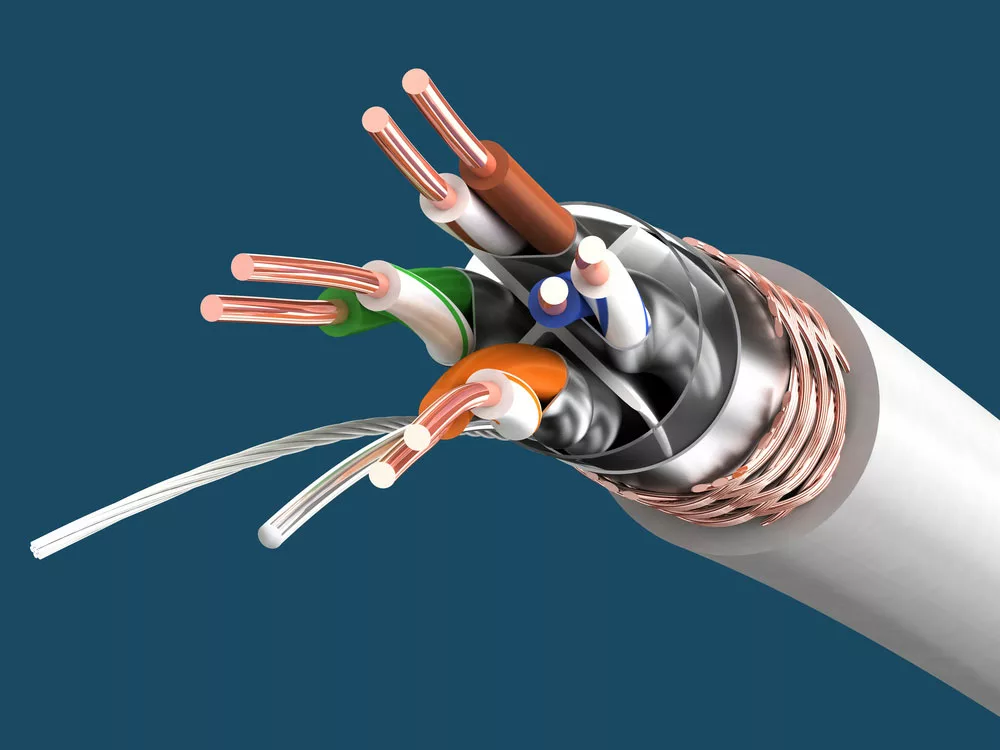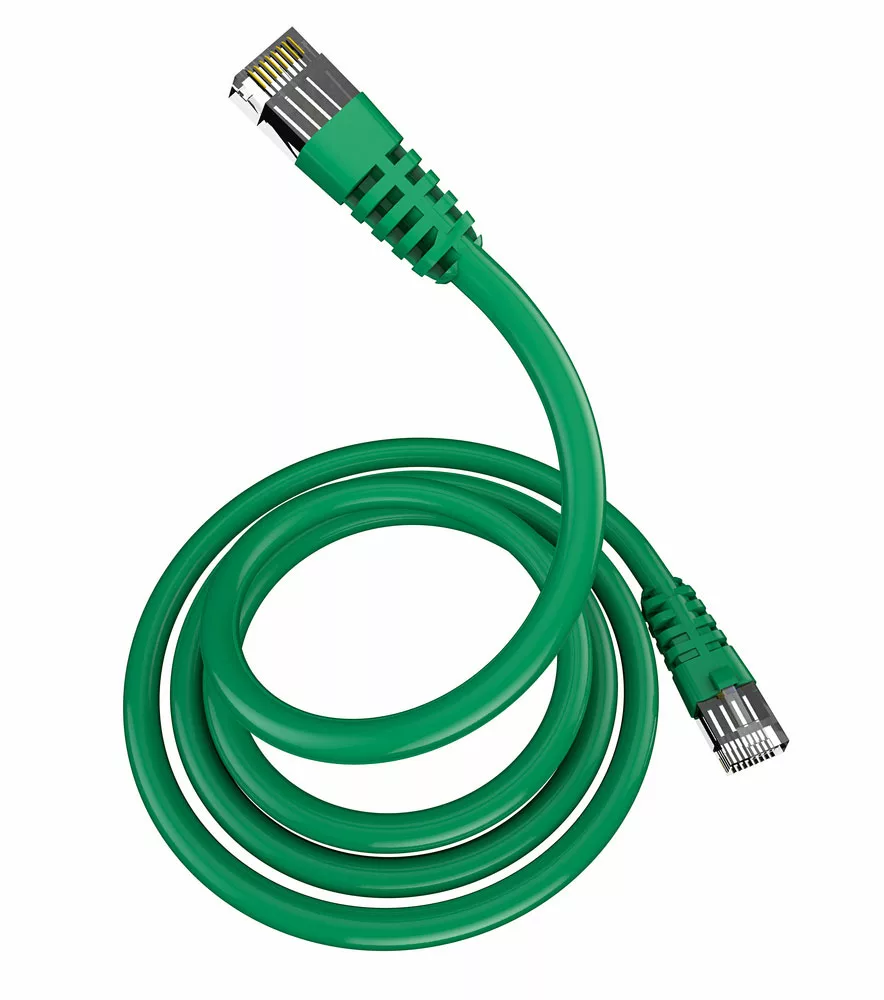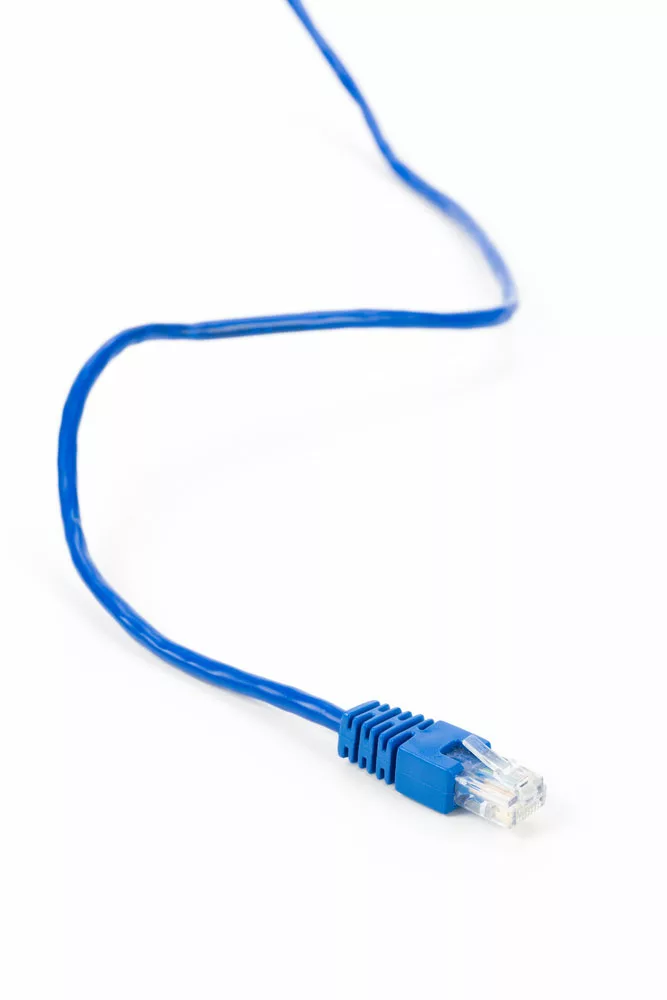About Ethernet Cable Gauge, Ethernet cables connect devices to wired networks while they are made differently.
For instance, you may notice an AWG identification printed on the cable’s jacket while buying an ethernet cable (CAT6a, CAT6, or CAT5e).
That is why we have compiled this article to help you understand everything about ethernet cable gauge (AWG).
Table of Contents
- How does the wire gauge impact ethernet cables?
- What ethernet cable gauges are available?
- Standard gauges network cables vs Slim network cables
- Conclusion
How does the wire gauge impact ethernet cables?
You can measure wire thickness in a gauge, which is a number. Similar to shotgun needles and shells, smaller numbers mean larger diameters.
Therefore, an ethernet cable with a lower gauge (for example, 24AWG) is thicker than an ethernet cable with a higher gauge (for example, 28AWG).
This difference in AWG thickness relates to the quality of copper used in making the wire itself. For instance, more copper leads to thicker wire pairs, which means the shielding can be thicker too.
Therefore, changing the wire’s gauge will significantly impact how your ethernet cable functions.
Flexibility
The thinner cable’s flexibility creates more options for dense networks and patch panels.
More flexible ethernet cables can connect either;
- Through awkward positions
- In very short runs
This feature gives network designers more freedom.
Length
Thicker cables typically create less electrical resistance, which does the following two things;
- Produces less heat
- Minimizes the loss of signal over the length of the cable
To keep things easy, thicker ethernet cables tend to withstand longer runs with less signal degradation. This feature gets even more true when you include POE in the mix.
Heat
The issue of heat is more complicated than it may seem. For instance, thicker cables generate less heat, but over short runs, the heat production difference between thin and thicker ethernet cables does not add up to a whole lot.
That’s because thinner cables are suitable for airflow because there is more room for air between the cables. Therefore, the improved airflow makes heal management better and easier.
Nevertheless, in extremely dense spaces or a network closet, the thicker cables are ideal for heat management.
What ethernet cable gauges are available?
Depending upon the thickness and diameter of the wire, there are three main AWG categories.
For instance, standard gauges are typically either 24AWG or 26AWG.
Meanwhile, you can get slim network cable categories, which is 28AWG. Read on to learn more about the available ethernet cable gauges;
24AWG
These are the largest in size compared to the other two cable gauges. Most of the 24AWG cables are solid core cables, which makes them perfect for longer distances.
For instance, the maximum distance you can run CAT6a, CAT6, and CAT5e ethernet cables is up to 100 meters (328ft).
However, within these 100 meters, some cables, such as solid cables, are ideal for performing over long distances.
If you choose 24AWG cables, you will get great performance at shorter and longer distances as these cables use more copper than 28AWG and 26AWG ethernet cables.
To visualize this, you can check the test of an insertion loss of 24AWG solid ethernet cable up to 329ft; The insertion loss occurs when the signal begins to decline with the device’s insertion in the transmission from one point to another.

Solid cables for long runs
26AWG
The 26AWG is another common ethernet cable gauge available in the market. This cable’s gauge size is usually found in stranded cables.
They come with a little less copper than the 24AWG cables but with a little more than the 28AWG cables, making 26AWG ethernet cables best for short cable runs.
Generally, you can use these ethernet cables for making patch cables in your office, business, or home.
Good examples are the CAt6a patch cables and CAT6a shielded stranded ethernet cables.
These 26AWG ethernet cables have foil wrapped around each pair and stranded which is vital in protecting the cable from EMI.

Patch cable for short runs
28AWG
The 28AWG cable is becoming more and more common as they have smaller wires and stranded conductors.
As a result of the construction, the 28AWG is the most flexible of the three ethernet cable gauges, making them vital in installing patch panels and networking enclosures.
Moreover, due to the smaller size of 28AWG ethernet cables, less copper is used in their construction.
Therefore, 28AWG cables are less effective at longer distances performance than the 26AWG and/or 24AWG.
According to the TIA568.3-D standard, the maximum length of 28AWG can not exceed 15 meters (49.2ft).
So, we highly recommend running a 28AWG cable on the short side.

Slim ethernet cables for flexibility
Standard gauges network cables vs Slim network cables
While screening for the best ethernet cable, you must have encountered the thin version of CAT6a, CAT6, and CAT5e cables.
These slim ethernet cables are commonly made of 28AWG wires.
Besides, their diameter is more than 25% smaller than those of their 24AWG and 26AWG counterparts or standard gauges network cables.
While thinner copper conductors may limit the slim network cable’s length and make them more prone to damage, smaller cables’ outside diameter can offer some benefits, which include the following;
- Easier installation in crowded racks.
- Better port label’s viability on patch panels and other network equipment.
- Better airflow in high-density racks.
- Easier routing of cables through managers and around corners.
Conclusion
Therefore, thin ethernet cables open up options on a dense patch panel.
However, thick ethernet cables enable ethernet to cover more physical distance in your network.
Choosing the right ethernet cable gauge helps with overall performance.
While three gauges exist (24AWG, 26AWG, and 28AWG), 24AWG is ideal for longer distances and the most adaptable because it is made with more copper.
26AWG ethernet cables are perfect for shorter runs with the most wonderful shielding.
While 28AWG ethernet cables are the most flexible, they have more insertion loss over long distances.
That said, the ethernet cable gauge is a crucial factor in wiring harnesses and cable assemblies. So, if you have queries about AWG, feel free to contact Clooms Tech for help.
